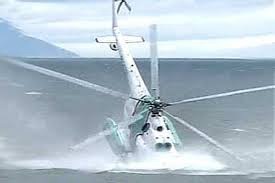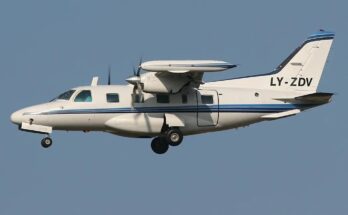
On a clear day at Cabo San Lucas International Airport, a routine landing turned into a serious incident involving a Gulfstream V business jet, registered as N1948Z. The aircraft, widely regarded for its long-range capabilities and luxurious interior, suffered substantial damage after veering off the runway during landing. Though there were no fatalities, the event raised significant concerns about operational procedures, weather considerations, and runway safety at the popular Mexican resort destination.

The incident occurred on [insert specific date if known], as the Gulfstream V was completing a flight into Cabo San Lucas (MMSL) with several passengers and crew onboard. Witnesses reported that the approach seemed normal until the aircraft made contact with the runway. Shortly after touchdown, the jet began to drift uncontrollably to the right, ultimately departing the paved surface. It continued off the runway, traversed a section of uneven terrain, and came to rest with visible damage to the landing gear, fuselage, and wing structure.
Airport emergency response teams arrived quickly at the scene. Fortunately, all passengers and crew were able to evacuate safely, and no major injuries were reported. However, the aircraft sustained what officials described as “substantial” damage, which may render it a total loss depending on insurance and structural assessments.
The Gulfstream V is known for its sophisticated avionics and high safety standards, making this incident particularly noteworthy. Designed for intercontinental travel, the jet is a favorite among corporate executives and private owners for its range, comfort, and performance. N1948Z, in particular, had a clean safety record and had undergone regular maintenance, according to publicly available FAA records.
In the days following the accident, aviation authorities from both Mexico and the United States initiated investigations. The preliminary report suggests that runway conditions may have played a role, possibly exacerbated by wind gusts or pilot misjudgment. Some have speculated that the aircraft may have touched down too far down the runway or landed with a higher-than-recommended speed, limiting the time available for safe deceleration and directional control.

Weather data from that afternoon showed gusty crosswinds, a known challenge for even experienced pilots. Cabo San Lucas Airport, while equipped to handle jets like the Gulfstream V, has seen an increase in private and charter traffic in recent years, particularly during peak tourism seasons. Some aviation experts have pointed out that additional infrastructure upgrades and enhanced pilot briefings on local wind patterns may help prevent similar incidents in the future.
The National Transportation Safety Board (NTSB) and its Mexican counterpart, the Dirección General de Aeronáutica Civil (DGAC), are expected to release a full report once all data, including cockpit voice recordings and flight data, is thoroughly reviewed. This report will aim to determine the exact cause of the runway excursion and offer safety recommendations to mitigate future risks.
While the passengers walked away from the accident without serious harm, the incident has left a significant mark. It serves as a reminder that even in clear skies and under routine operations, aviation remains a field where precision, preparation, and environmental awareness are critical at every moment.
Let me know if you’d like to adapt this for a news article, YouTube narration, or include more technical analysis.


